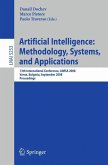Size Estimation is one of the popular research fields associated with the software industry. The precise prediction of the size at an early stage of the software development process directly leads to the calculation of storage identities. The development of software projects has a high cost associated with it. A precise size estimation minimizes the project failure risk as it in turn prevents wrong cost and effort estimations. Hence, it is a very important part of project planning and project management because many times wrong estimations may result in mid-way abandoned projects. The system framework is made of a number of components that define the quality, size, and effectiveness of the software project. Some of the components are borrowed from other frameworks and some are designed by the companies themselves. Thus, the wastage of resources can be prevented using precise and early size estimations. In the present work, various factors playing an indispensable role in determining software size estimation are also discussed. The research mainly revolves around the size estimation of the project and presents a machine learning-oriented solution for precise estimation of the size. The feature selection that results in quality estimation is concentrated and focuses to evaluate the software size based on the concept of machine learning. The evaluation of the proposed research using different scenarios and variations is also performed to illustrate the effectiveness of the designed size estimation work. The proposed work involved a segmentation method to label the projects as high and low size. In this process three similarity indexes namely, cosine similarity, soft cosine, and hybrid similarity with the combination of the two are similarity measures and Euclidean Distance. The group labelling is done based on machine learning parameters such as Mean Square Error (MSE), Standard Deviation (STD), and Standard Error (SE). The group labelling step also involved Artificial Bee Colony (ABC) for intelligent selection. A scale neutralization is also performed due to the different nature of the parameters. To judge the labels rule architecture is developed that labelled the projects into high and low software sizes using Kaggle and Promise datasets. The multiclass classifier is used for the training and classification of the project data obtained from NASA that have been employed by existing studies as








